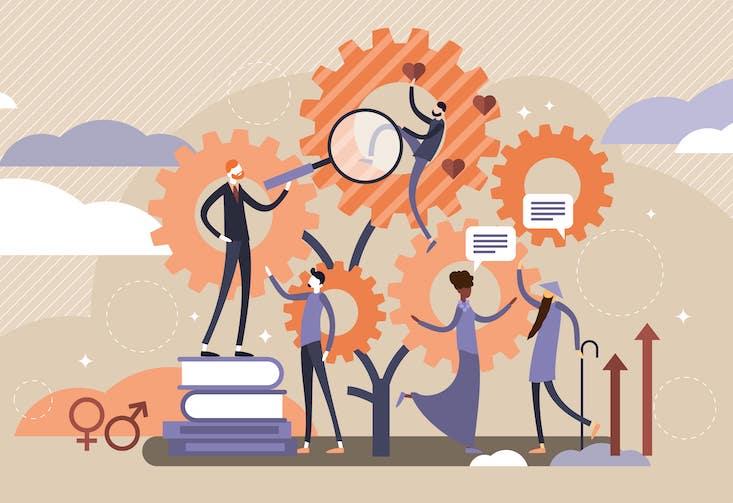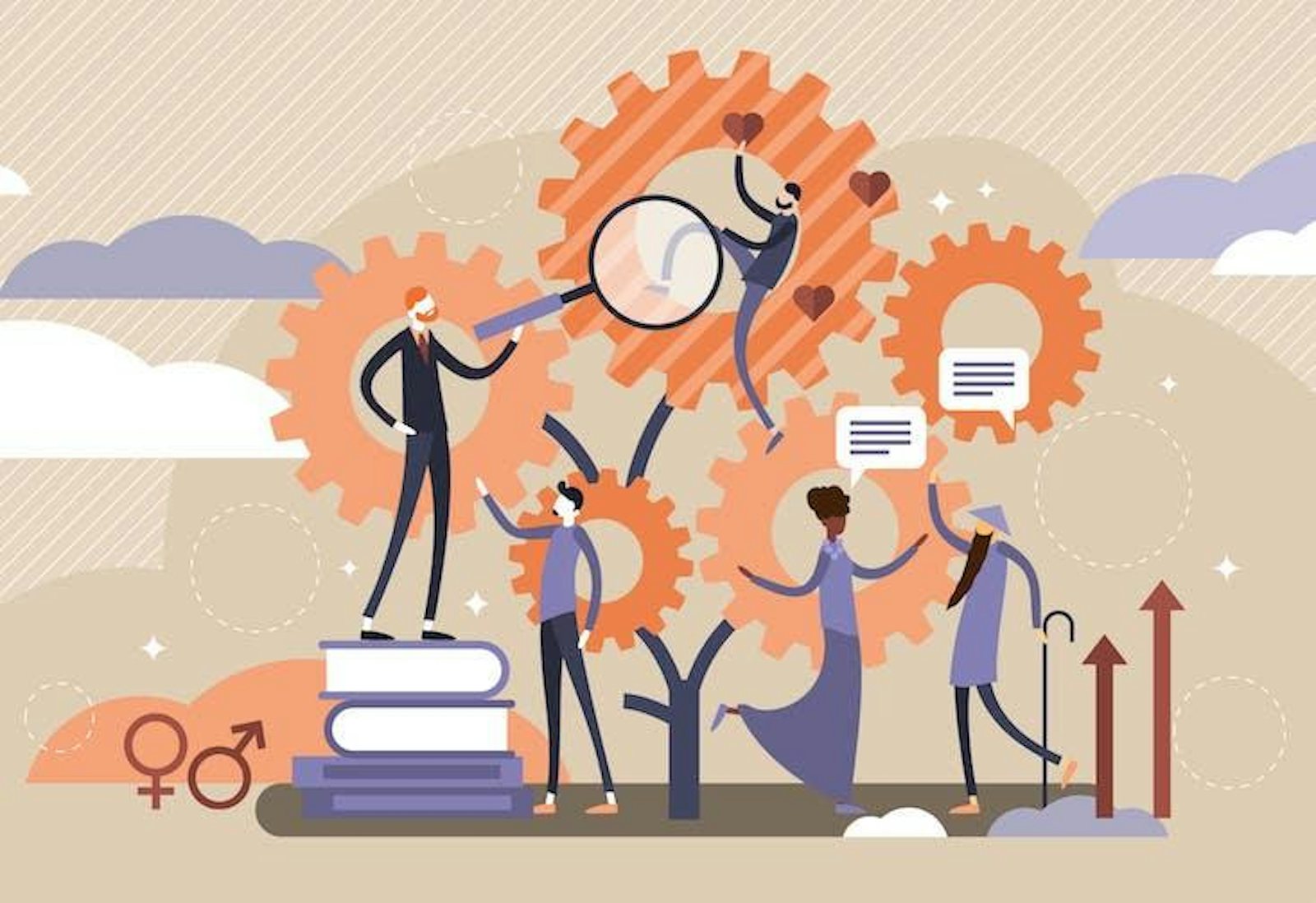
Something about me must remind people of a blind 17th-century poet. My last name, Miton, is French, yet people outside of France invariably misspell it as “Milton”—as in the famed English author, John Milton, of the epic poem Paradise Lost.
It is not uncommon for people to misspell an unfamiliar name—yet 99 times out of 100 people misspell mine as “Milton.” That is the name that shows up on everything from my university gym card to emails from colleagues.
It might seem trivial, yet this misspelling actually illustrates a key feature of how cultural practices emerge and stabilize.
When studying culture, one of the key questions scientists ask is about continuity: Why do people do the same things, in roughly similar ways, over long periods of time? Consider how traditional food recipes, say tamales, have maintained a stable core definition over generations—corn-based dough cooked in corn husks.
Most misspellings are systematic and non-random transformations.
Cognitive anthropologists such as myself try to answer this scientific question by studying how human minds interact with culture. One approach, known as cultural evolution, draws from Darwinian theory to view the evolution in longstanding cultural practices as akin to the evolution of biological species.
Most cultural evolution theorists assume that these traditions are maintained through generations by faithful transmission, or what’s known as “cultural fidelity.” Because humans are considered to be particularly adept at acquiring information through imitation, it stands to reason, they say, that we’d copy our models without mistakes. Humans, these researchers assert, inherit cultural information in the same way DNA sustains genetic information, with low rates of random mutations. Considering cultural change in this way has led cultural evolutionists to rely heavily on the subfield of population genetics—and to use models that assume cultural continuity works solely through inheritance.
Yet cultural information is not actually passed on through generations with the same degree of fidelity as genetic information.
The frequency of certain misspellings is one example that suggests a more complicated explanation for how humans achieve culturally stable forms. As a cognitive anthropologist working in the emergent interdisciplinary field of complexity science, I’m interested in how cultural forms persist not because they get reproduced with high fidelity, like genetic information—but for the opposite reason, because they’re often copied wrongly. My colleagues and I have found that people produce recurrent and similar forms over time (such as a recipe or a musical sequence) because of cognitive, environmental, social, and other factors related to the transmission of information that generate certain “transformations” rather than others.
In other words, I start with an assumption that cultural evolution follows different paths than biological evolution. Stable cultural forms do not have to result from close replication; they can emerge continuously out of subtle changes.
So, what does our tendency to make certain mistakes—and not others—reveal about the complexity of human cultures?
Most misspellings are systematic and non-random transformations. People transform words for any number of reasons, including whether the speaker already knows the misspelling and/or the correct spelling, or how often they have encountered similar words in the past.
In the case of my last name, “Milton” is likely a variant English-speakers have encountered far more often than “Miton.” So, if there is any doubt about the correct spelling, they default to the one they know. In my case, people may remember “Milton,” the name of a celebrated poet, from school or other settings, and thus assume that spelling to be correct. In other words, the accumulation of personal experiences, education, and other forms of cultural knowledge play a crucial role in the transmission of information.
Misspellings also emerge in relation to the linguistic environment in which they occur. If a name includes sounds not typical in a given language, speakers will usually construct a version of the name that’s closer to sound patterns that more commonly appear in that language. That helps explain why the correct French pronunciation of Miton also sounds quite different from the English pronunciation of Milton.
Such examples of people systematically transforming different pieces of information in non-random ways abound in daily life.
One method I use to study these systematic changes in my own research takes inspiration from the children’s game “Telephone.” In this game, a child starts out with a phrase, then whispers that phrase to the next child in the row, who then repeats what they have heard to the next child, and so on. The last participant then reveals what they heard and compares that to the original phrase. Almost always, the starting and ending phrases manage to be different, which often leads to all the players bursting into laughter.
When my colleagues and I conduct experiments to study cultural evolution, we follow a similar logic: We give the first person in a chain content to recall or a task to perform, and that person tells or demonstrates whatever they manage to recall to the next participant in the chain, and so on. This method allows us to study what kinds of transformations accumulate from person to person.
In one study, for instance, my colleagues and I asked participants to reproduce a sequence of taps on drum pads. We created different setups so the chains of participants faced different physical constraints to produce the same rhythm, using either large movements, small movements, or a mixture of both to tap on the pads. After six “generations,” or episodes of transmission, the rhythms produced by participants showed distinctive features depending on these constraints. Participants made systematic transformations according to their physical environments, which led to stable yet distinct rhythms.
As these kinds of experiments demonstrate, by observing how information changes when passed from person to person (or generation to generation), scientists can better understand the role different factors play in stabilizing traditions.
Though the majority of cultural evolutionists remain tethered to their Darwinian roots and maintain a rather strict analogy between cultural and biological evolution, increasing numbers of researchers are now investigating how the stability of particular cultural forms can be sustained through transformations rather than through faithful copying. As fallible as human transmission can be, the fact that our mistakes in transmitting cultural information occur in systematic and directed ways, rather than purely randomly, is opening a new pathway to understanding continuity and change within the field of cultural evolution.
This shift in understanding takes cultural evolution into the realm of complexity science, or the study of complex systems. This approach incorporates work from various disciplines, including anthropology, biology, physics, and computer science.
Within complexity science, large-scale social stability is understood to be caused by many different small-scale movements at the level of everyday life. From this perspective, the continuation of, say, a culinary tradition might depend on any number of cultural phenomena that continually emerge from local interactions between individuals or among small groups of people.
For instance, tamales, which I defined earlier, are not always cooked in corn husks—sometimes banana leaves are used instead. The continuation of this dish does not depend on the exact replication of a single recipe over generations but on how these recipes have been shared and modified to adjust to local products or tastes across time and space.
There are many other transformations complexity scientists like myself have yet to explore. I recently moved to New Mexico, and a new mutation of my last name—“Minton”—has shown up. I’m still trying to figure that one out.
Helena Miton is a cognitive anthropologist and complexity postdoctoral fellow at the Santa Fe Institute.
This work first appeared on SAPIENS under a CC BY-ND 4.0 license. Read the original here.






























